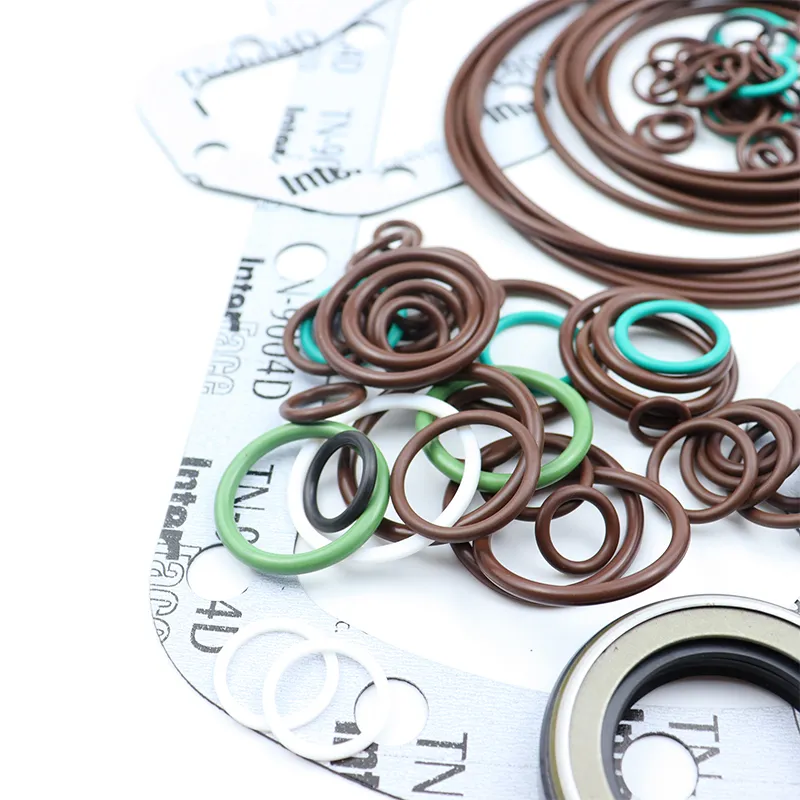Nov . 06, 2024 17:33 Back to list
Effective Solutions for Hydraulic Cylinder Dust Seal Protection and Maintenance
Understanding Hydraulic Cylinder Dust Seals
Hydraulic systems play a crucial role in various industrial applications, providing power and motion through the use of hydraulic fluids. One important component of these systems is the hydraulic cylinder, which transforms hydraulic energy into mechanical energy. To ensure the longevity and proper functioning of hydraulic cylinders, dust seals are essential, acting as the first line of defense against contaminants.
The Role of Dust Seals
Dust seals are designed to prevent dust, dirt, and other particles from entering the hydraulic cylinder, which can cause premature wear and potential failure. These seals are typically positioned around the rod of the hydraulic cylinder, where it extends and retracts. The introduction of contaminants can lead to several problems, including scoring on the rod surface, reduced sealing efficiency, and ultimately system failure.
By providing a barrier, dust seals help maintain the integrity of the hydraulic fluid within the system, ensuring that the cylinder operates smoothly and efficiently. In doing so, they contribute to the overall reliability and durability of hydraulic systems in various applications, such as construction, manufacturing, and automotive industries.
Types of Hydraulic Cylinder Dust Seals
There are several types of dust seals available, each designed for specific applications and environments. The most common types include
1. Rubber Dust Seals Typically made from synthetic rubber compounds, these seals provide excellent resistance to abrasion, aging, and temperature variations. They are widely used in diverse applications due to their flexibility and reliability.
2. Polyurethane Seals Known for their exceptional wear resistance and tensile strength, polyurethane seals are often used in more demanding hydraulic environments. They can withstand harsher conditions, making them suitable for heavy-duty machinery.
3. Metal-Driven Seals In certain applications, seals that incorporate metal components are used to enhance durability. These seals are generally more robust and can withstand extreme conditions, including higher temperatures and pressure levels.
hydraulic cylinder dust seal

4. Integrated Sealing Systems Some advanced hydraulic designs utilize integrated seal systems that combine various materials to optimize performance. These systems may include a combination of dust seals, wipers, and internal seals to provide comprehensive protection.
Installation and Maintenance
Proper installation of dust seals is critical to their performance. Before installation, it is essential to inspect the cylinder's rod and housing for any signs of damage or wear. A smooth surface is crucial for the effective functioning of the dust seal. Additionally, ensuring the correct orientation and positioning of the seal during installation can prevent leaks and ensure a tight fit.
Maintenance of hydraulic cylinder dust seals involves regular inspections to check for signs of wear, damage, or contamination. Periodic cleaning of the rod surface and the surrounding area can help extend the life of the seals. If any issues are detected, prompt replacement of the seals is necessary to avoid further damage to the hydraulic system.
Benefits of Using High-Quality Dust Seals
Investing in high-quality dust seals offers several benefits for hydraulic cylinder maintenance. High-quality seals provide superior resistance to contaminants and wear, leading to reduced downtime and maintenance costs. Additionally, they enhance the overall efficiency of hydraulic systems, which can result in lower operational costs and improved productivity.
Moreover, using the right seal materials for specific applications can extend the lifespan of both the seals and the hydraulic cylinders themselves. This proactive approach to maintaining hydraulic systems is essential for industries that rely heavily on hydraulic power for their operations.
Conclusion
In conclusion, hydraulic cylinder dust seals are vital components that protect hydraulic systems from harmful contaminants. Understanding their role, types, and maintenance is important for anyone involved in hydraulic system operations. By investing in high-quality seals and following proper maintenance practices, businesses can enhance the durability and performance of their hydraulic equipment, leading to increased efficiency and reduced costs in the long run. As industries continue to evolve and demand more from hydraulic systems, the importance of effective dust sealing will only grow.
-
The Trans-formative Journey of Wheel Hub Oil Seals
NewsJun.06,2025
-
Graphene-Enhanced Oil Seals: Revolutionizing High-Pressure Oil Sealing
NewsJun.06,2025
-
Future of Hydraulic Sealing: Advanced Intelligent TCN Oil Seals
NewsJun.06,2025
-
Don’t Let a Broken TCV Oil Seal Ruin Your Day
NewsJun.06,2025
-
Bio-Inspired Dust Seals for Better Sealing Performance
NewsJun.06,2025
-
Biodegradable and Sustainable Hydraulic Seal Materials
NewsJun.06,2025
-
Top Oil Seal Solutions for Your Industrial Needs
NewsMay.22,2025
Products categories
















